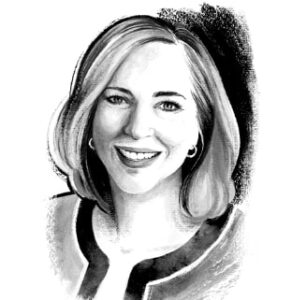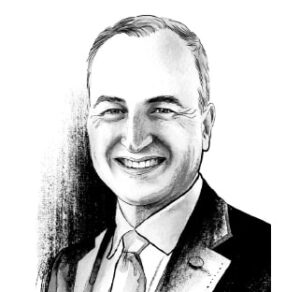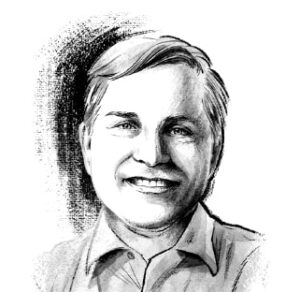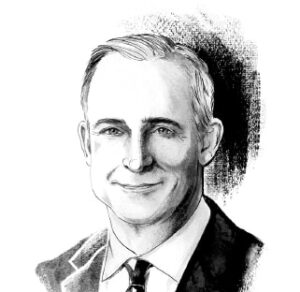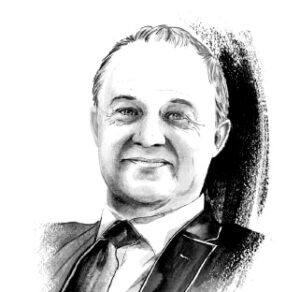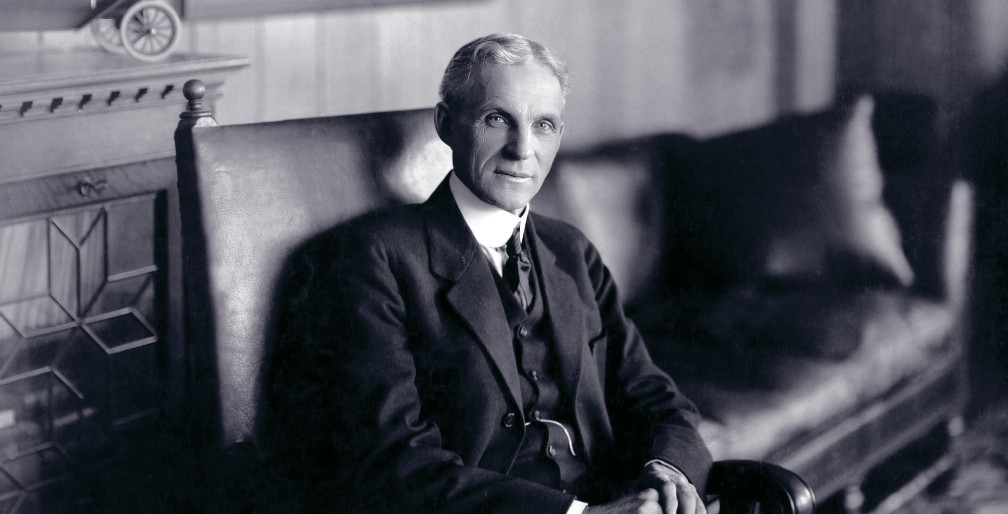How CEOs Lead Across Different Organizational Structures
No one-size-fits-all model of corporate leadership exists—differing executive-team compositions and organizational structures necessarily inform chief executives’ relationships and responsibilities. Yet CEOs across different sectors and governance structures today face common emerging challenges, including those pertaining to corporate accountability.“ Share on X We asked five CEOs how their organization’s distinct structure influences their leadership.
Private company:
Jennifer Scanlon, UL
Being responsive to stakeholders and setting the tone for one’s tenure as CEO is well-served by deft deployment of one skill in particular: listening.
It is a skill and a practice that Jennifer Scanlon has put focus toward as CEO of UL, the Northbrook, Illinois-based safety certification specialist. At UL, which Ms. Scanlon joined in September after serving as CEO of USG Corp., that has
meant, for example, hosting town-hall meetings wherever she travels.
“When a company begins with a dedication to employees and customers as well as the communities in which you operate, you naturally serve a broader stakeholder base.” — Jennifer Scanlon, CEO, UL
“Leading UL means engaging our 14,000 employees in our mission,” Ms. Scanlon says. “I want them to be as excited about our future as I am.” At the town halls, she says, “I work hard on teasing out their questions, listening to their concerns and hearing their excitement about what they’re doing and how they can do it better.”
From a corporate social responsibility (CSR) perspective, responsive listening means taking action on issues that all stakeholders—investors, employees, customers and suppliers among them—have identified as top-of-mind priorities.
Ms. Scanlon’s dedication to ensuring that UL’s global employee base is engaged and takes pride in the organization’s work is one reason why, as a member of the Chicago Network, she signed on to that organization’s Equity Principles, pledging to work toward achieving gender equity in leadership positions within UL by 2030. Ms. Scanlon also is one of more than 800 chief executives nationwide to sign the CEO Action for Diversity and Inclusion Pledge.
Sustainability is another leading social responsibility priority for UL. In 2019, the company became a signatory to the United Nations Global Compact, issued its first sustainability report and launched the 125 Stream Initiative, a volunteer effort in which more than 1,500 employees cleaned up local streams.
It is the kind of engagement and business response to a global concern that Ms. Scanlon hears support for outside the office, too. “I have two Gen-Zers who are part of the generational drive to reduce, recycle and reuse,” she says. “It is their generation that is driving greater accountability in every business’s sustainability. They rightly recognize that the future belongs to them.”
The contrast is sharp between this new ethos and the principles preached when Ms. Scanlon was an MBA student at the University of Chicago. “I was trained in the Milton Friedman mode that the only people you served were the shareholders,” Ms. Scanlon says.
How things have changed, driven by consumers and investors alike. She notes: “If you are a public company, like USG was, BlackRock is likely invested in you—and that means you would have received a personal copy of Larry Fink’s letter [in January] demanding that your company do more in CSR to earn BlackRock’s investment. If you are a private company, you know that your customers along with your employees are beginning to demand that you do more in CSR.”
UL’s unique position as a company that trades on public trust serves as a foundation for its CSR efforts, Ms. Scanlon indicates. “Customers turn to UL for the assurance that their products will undergo a rigorous testing process that helps instill trust,” she says. “When a company begins with a dedication to employees and customers as well as the communities in which you operate, you naturally serve a broader stakeholder base.”
Employee-owned company:
Dave Filipchuk, PCL Construction
Hanging on the wall in each of PCL Construction’s district offices is a copy of a handwritten note written in 1948 by company founder Ernest Poole. It lists 10 guiding principles for the business, among them: “Encourage integrity, loyalty and efficiencies. Keep your word as good as your bond. Good accounting and cash keeping are essential.”
President and CEO Dave Filipchuk remains committed to “Poole’s Rules” to this day. “It’s a company that values its humble roots and believes that clients hire us for basic reasons: Keep your word. Be fair and friendly,” says Mr. Filipchuk, who became CEO in 2016 after 32 years at the firm.
In a civil and commercial construction industry dominated by giants, Edmonton, Canada-based PCL has resisted the temptation to grow at all costs. The company is by no measure small; it handles $7 billion in construction projects annually, with 4,500 salaried employees and 10,000 hourly tradespeople.
But “Poole’s Rules” underlie an organizational commitment to act with integrity and prioritize sustainability, financial stability and workplace safety in all projects. “Construction is an inherently dangerous business,” Mr. Filipchuk says. “We define success first and foremost by sending everyone home safe every day.”
Since 1977, the organization has been 100% owned by its employees—a corporate structure that Mr. Filipchuk says keeps stakeholders focused on taking care of each other and putting the greater good of the organization ahead of personal interests. “We view this as a long-term play,” Mr. Filipchuk says. “We all have ownership in common.”
In 2019, PCL donated nearly $7 million to charity. Each district leader is charged with “figuring out what’s most impactful in their areas and then has the ability to donate to, or sponsor, initiatives that make the places we live and work better,” Mr. Filipchuk says.
The CEO’s philosophy of leadership is to seek diverse perspectives and engage with people at the front lines. Each fall, PCL senior leaders visit district offices to hear directly from employees about their priorities and opportunities they see. “Visibility of senior leadership, in person, actively listening and also sharing what we experienced in similar situations goes a long way in building success and team morale,” he says.
Adhering to these core values helps inspire employee pride, says Mr. Filipchuk. “We want our employees’ kids to say, ‘My mom or dad built that.’’’
“We define success first and foremost by sending everyone home safe every day.” — Dave Filipchuk, CEO, PCL Construction
Family-owned company:
Brent Burns, JM Family
JM Family Enterprises’ five core values are consideration, cooperation, communication, innovation and accountability—truly, family values, indicates Brent Burns, a 20-year company veteran who became JM Family’s CEO in 2018. The company’s name “speaks to family as the fabric of the business,” he says.
JM Family is a $16 billion diversified automotive enterprise and one of America’s 20 largest private companies. Founded in 1968 as the first Toyota distributor in the southeastern United States, JM Family has expanded into the finance, insurance and retail sales verticals over the years. Today the company touches 20% of all Toyotas sold in the U.S.
“We define success first and foremost by sending everyone home safe every day.” — Brent Burns, CEO, JM Family
Yet for all of that growth, Mr. Burns remains committed to ensuring that everyone in the organization still feels like part of the family. Beyond receiving deep discounts on new vehicle purchases, employees can have 100% of their tuition covered for studies at Florida Atlantic University. “If you believe your associates are your competitive differentiation, you invest in them,” Mr. Burns says.
All managers participate in a multiday training session that emphasizes the importance of participative leadership and employee development and the value of diverse opinions. “We want people up front to know to expect honesty and integrity from our associates,” he says.
JM Family Enterprises has been on Fortune magazine’s “100 Best Companies to Work For” list for 21 consecutive years; last year it received accolades, too, for its diversity and employment practices. In an industry notorious for high turnover, 44% of JM Family’s employees have been with the company for more than 10 years, and 15% have been there for more than 20.
One of the many payoffs from developing experienced and well-supported employees is better ideas. Last year, the company challenged its employees to develop solutions to common problems plaguing its processes. Among the 23 initiatives launched as a result of the effort was a simple change to the packing process that reduced damage to parts in shipment by nearly half.
“What I do is all about empowering and enabling our associates to be the best they can be,” Mr. Burns says. “I don’t see a great culture as a luxury; I see it as a necessity.”
Not-for-profit company:
Steve Preston, Goodwill
Goodwill Industries International CEO Steve Preston has racked up wide-ranging experiences across a long career. For 20 years, Mr. Preston built a reputation as an able financial executive before he moved to the U.S. Small Business Administration, which was still reeling from heavy criticism for how it handled disaster loan operations in the wake of Hurricane Katrina. Two years after leading that agency out of a crisis, Mr. Preston was challenged to similarly turn around the U.S. Department of Housing and Urban Development only weeks into the global 2008 financial crisis. His sweeping reforms are now credited with helping to restore faith in the tattered mortgage industry.
“I’ve tried hard to be accessible, to join my team in the trenches. Any CEO who walks in puffed up about themselves has begun to lose the battle.” — Steve Preston, CEO, Goodwill
Coming from these experiences, Mr. Preston knew he wanted to tackle an equally meaningful challenge. “I had written a personal mission statement that effectively described my current job, which I hope was providential,” he says.
Providence appeared in the form of an offer to lead Goodwill, the $6 billion job training and employee placement nonprofit best known for its retail thrift stores.
But leading this unique and sprawling organization would not be simple. Goodwill comprises 157 independently run 501(c)(3)s—each with its own CEO. And though Goodwill is a not-for-profit, it also is a major retailer with 130,000 employees and $4.5 billion in donated goods retail revenue. The organization’s size (with a presence in 12 countries) means that its impact is big: Last year, Goodwill supported 35 million people through revenue generated from the business’s secondhand sales while also recovering more than 4 billion pounds of donated merchandise that would have otherwise gone into landfills. Direct services provided to individuals include job training and placement, virtual mentoring, and assistance with child care, tax preparation and transportation. “We have to do everything we can to run a top-tier retail network,” Mr. Preston explains. “It’s critical to us to have that business mindset.”
“We need to be both agile and responsive to change,” he says. That will take a strong vision combined with a supportive mindset. Entering his second year at the helm, Mr. Preston was preparing to embark on a road show to engage with all 157 affiliate CEOs to learn about their distinct communities and inform the organization’s strategy going forward. “You can’t dictate local empowerment from the center,” he says. “I’ve tried hard to be accessible, to join my team in the trenches. Any CEO who walks in puffed up about themselves has begun to lose the battle.”
One difference between his previous private-sector assignments and this one: “I didn’t need tissues in my office before,” he says. “It can be overwhelming to see how we’re changing other people’s lives.”
Nationalized company:
Andrew Haines, Network Rail
When Andrew Haines took the reins of Network Rail in the summer of 2018, the organization—which develops, owns and operates Britain’s main railway network—was in a tailspin. In the preceding months, a disastrous timetable change caused thousands of trip cancellations, and a five-year project to rebuild track and infrastructure was scaled back dramatically as a result of disappointing early results. A government-commissioned study would later report that the organization’s perceived lack of customer focus “is what is fundamentally undermining trust in the sector.”
“As senior leaders, it is our job to empower [employees] and make sure they can.” Someone who amplifies the skills and capabilities of others “is ultimately the leader I try to be.” — Andrew Haines, CEO, Network Rail
Rebuilding that trust became “our biggest challenge over the next few years,” says Mr. Haines, who took a salary that was 27% below that of his predecessor.
Upon joining Network Rail, Mr. Haines identified a lack of accountability among senior leaders. To help improve performance for passengers, he began by empowering those on the front lines by decentralizing the organization into 14 geographic routes overseen by five regional business heads. Each organization operates as its own mini corporation.
“Each of the regional directors have a seat at the top table and report directly to me, with ultimate responsibility for day-to-day delivery of train performance in their respective regions,” he says.
The product of a Welsh working-class family, Mr. Haines started his 24-year rail career as a clerk in the left luggage room at London Victoria station. That is where he learned that even the most junior employees have solutions to improve the railway. “As senior leaders, it is our job to empower them and make sure they can,” he says. Someone who amplifies the skills and capabilities of others “is ultimately the leader I try to be.”
Yet even with such a massive turnaround effort on his plate, Mr. Haines has a lot of reasons to be optimistic. As one of the biggest landowners in the country, Network Rail can have an outsized impact on the U.K.’s total environmental footprint. It is why he has pushed the organization to adopt even more aggressive sustainability standards for the organization’s 41,000 employees, 20,000 miles of track, and 30,000 tunnels and viaducts. “It’s a huge business and a huge responsibility,” he says.
While it is too early to declare victory in a turnaround campaign, Mr. Haines believes the organization is pulling in the right direction. “My vision is for Network Rail to be a company that instinctively puts passengers and freight users first,” he says.
That would put it on the right track to success.
This article appeared in the Spring 2020 issue of IQ Insigniam Quarterly, with the headline “Form Follows Function.” To begin receiving IQ, go here.
